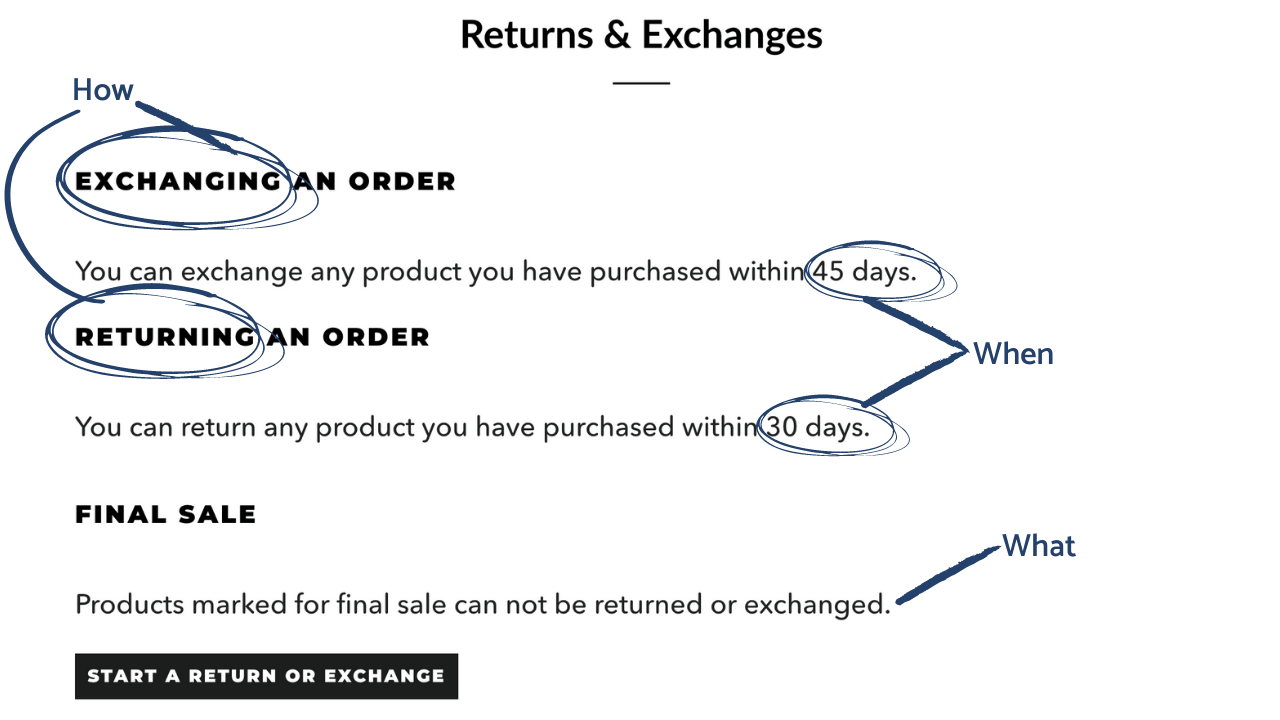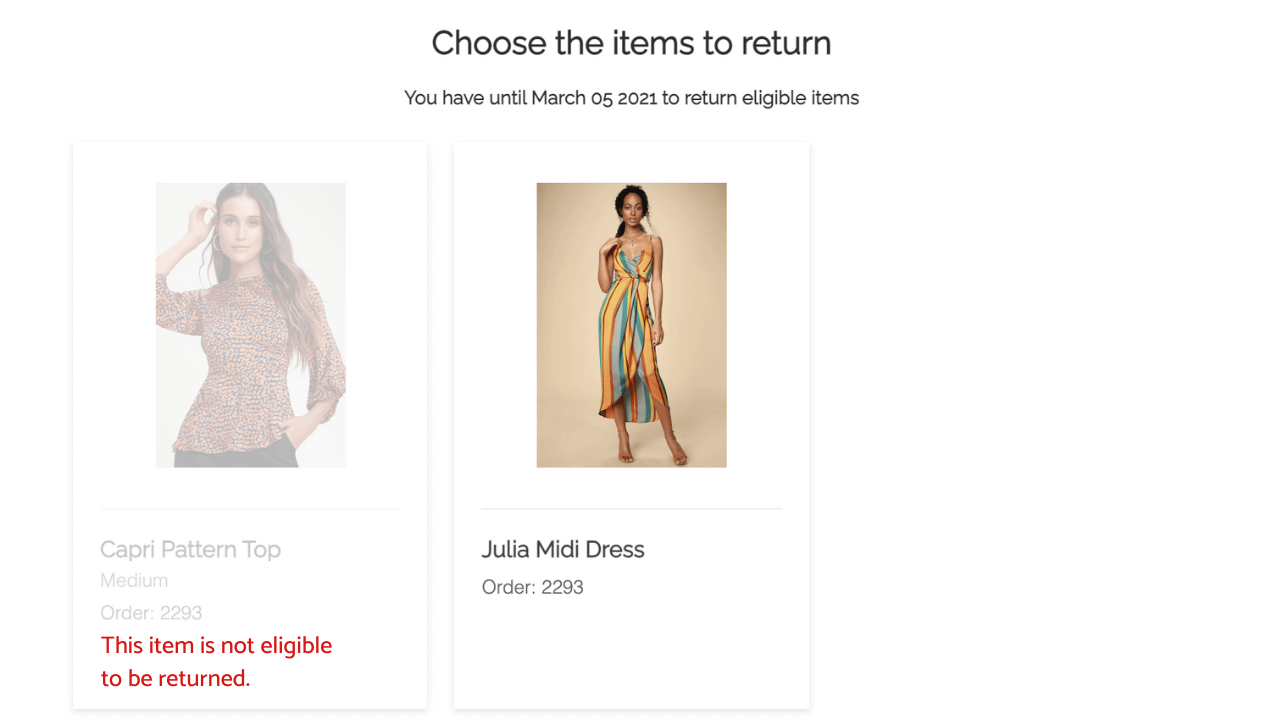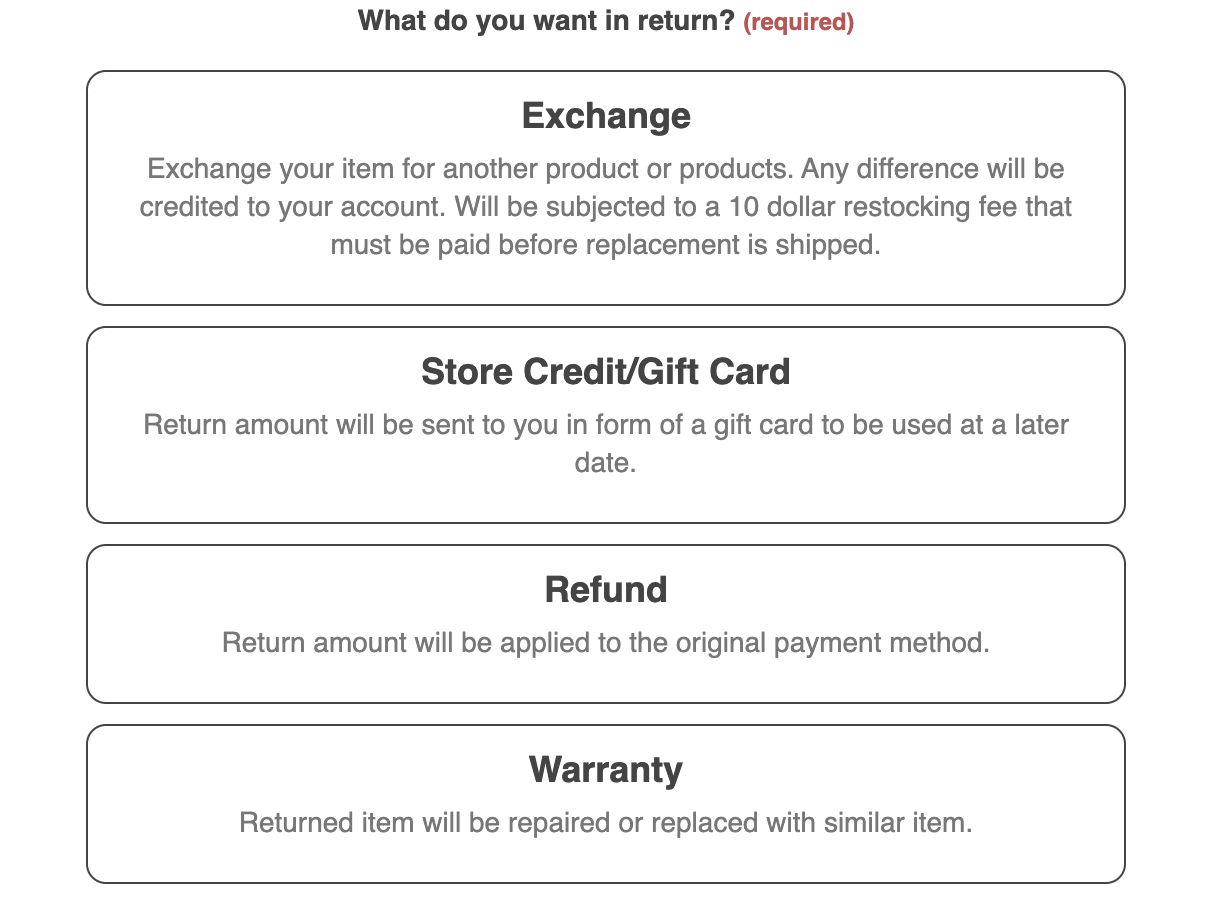Return Policy Tips: 7 Best Practices for a Great Ecommerce Return Policy

A return may be the most crucial experience in ecommerce. Thus, an ecommerce return policy is essential for your business.
According to UPS, around 73% of shoppers base future purchase decisions on past return experience. Additionally, As many as 67% of shoppers visit an ecommerce retailer’s return page before making a purchase. As a result, your return policy has a substantial impact on the customer relationship and your profits.
7 Best Practices for a Great Return Policy
The ReturnLogic team works with ecommerce brands every day to enhance the return process for their businesses. Along the way, we established some best practices to help you create a return policy that improves the customer experience and boosts sales.
- Define the Priorities of your Return Policy
- Ensure that your Return Policy is Easy to Find
- Answer the Big 3 Questions of a Return Policy
- Equip yourself to Enforce your Return Policy
- Present as Many Return Types as Applicable
- Offer at Least 1 Free Return Type
- Align your Return Policy with your Brand
1. Define the Priorities of your Return Policy
All too often, a return policy can feel like it’s you versus the customer. The customer wants a complete refund while your business tries to limit the cost of the return. But it’s important to find a balance between short-term product focus and long-term customer focus in your ecommerce return policy.
A product-focused return policy concentrates more on the immediate costs and value associated with a return. The goals are to minimize costs and maximize recovery value on returned products. Product-focused return policies tend to be stricter, with shorter return windows, more exclusions and conditions, and steeper fees.
A customer-focused return policy prioritizes the customer relationship. In this case, the primary objective is to maximize customer lifetime value through a smooth and consistent return experience. Customer-focused return policies are more lenient, with longer return windows, few exclusions, and little to no fees applied.
But how should you balance these two priorities?
A good indicator of which way you should lean in your return policy is relative customer value. The relative customer value reflects the average value of a customer versus the average value of a purchase. If your average customer value is five times greater than your average purchase value, you should be more customer-conscious.
Profit margins can vary widely by product category, and can help you decide whether a product-focused or customer-focused return policy is the right way to go. Some retailers enjoy a large profit from each sale, whereas others count on volume to win the day. The greater your profit margin, the more you can afford to be lenient with your ecommerce return policy.
Also, keep your values as a company in mind when crafting your return policy. If you strive to be friendly, polished, and approachable, make sure that’s reflected in your return policy. Almost no process can be a better test of the customer experience than a return.
2. Ensure that your Return Policy is Easy to Find
As many as two-thirds of shoppers visit the return page before making a purchase. If your return policy is difficult to find, visitors will immediately lose trust in your brand. So, even though you may not want more returns, it should be quick and easy for a customer to begin one.
Be sure to include a link to your return page in the footer of your website, so it’s always readily available.

Be careful not to bury the return policy in a section such as “Contact Us,” “FAQs,” or “Shipping.” But you can certainly include additional links to the return page in these locations.
Try to minimize the number of clicks required for a customer to begin a return. Their return experience will improve significantly from this small change.
3. Answer the Big 3 Questions of an Ecommerce Return Policy
When? How? What? Much of your return policy focuses on these simple questions.

The return window is the when of your return policy. It specifies how long customers have to return a product. The return window may begin at the order date, the shipment date, or the delivery date if available. If fulfillment is slow, you might want to use the shipment date or delivery date as the starting point or offer an extended return window.
We typically recommend a return window of around 30-60 days. If you are wary of extending it too much, try offering a longer return window for store credit and exchanges than for refunds. Doing so provides flexibility for the shopper and revenue for you.
How describes the return types – refunds, exchanges, store credit, and warranties – from which customers can choose. Exchanges tend to be preferred by brands in terms of profitability. But understand that pressuring a customer into an exchange won’t enhance the customer relationship.
Remember – we can subtly encourage exchanges or store credit but must ultimately let the customer decide what’s best for them.
Product exclusions or conditions are the what of your return policy. Many retailers have final sale items that are non-returnable. Or maybe the tags must be intact for a return to occur.
These stipulations try to minimize the loss of value on returned products and lessen the likelihood of return fraud. While this is a good intention, try not to be overly restrictive; a customer who can’t return a product may be more unhappy than a customer who returned a product.
4. Equip yourself to Enforce your Ecommerce Return Policy
It’s not enough to have a great return policy; you need to be able to enforce it. That starts with simplification. The simpler a return policy is, the less confusion and friction it will cause customers. A simple return policy is also much easier for your team to implement.
Try to reduce if/then business logic when possible. A more linear return policy is easier for customers and customer service representatives alike.
Manual validation of requested returns is hard for your team to manage. An automated return portal dramatically reduces the time spent on returns.

No one wants to give the customer bad news. Automation enables you to enforce your return policy without having to personally deny a return request. That’s smoother for the customer and for your team.
Just like any rule, there are times you may want to override your return policy and grant an exception. Perhaps a loyal customer received a damaged product, or a new customer experienced unexpectedly slow shipping.
It’s important to have the ability to override your return policy in these unique cases. Determine when to make an exception and the procedure for handling one. The more you plan for exceptions now, the less disruptive they’ll be when they arise.
5. Present as Many Return Types as Applicable
Be sure to offer as many return types as you can, especially exchange and store credit.

Although return types like exchanges and store credit are more complex than refunds, they also retain revenue and promote a long-term customer relationship.
A return solution like ReturnLogic can make it easy for you to process exchanges and store credit returns without the headaches.
And don’t forget about warranty returns! While warranties aren’t relevant to every business, they show that you stand by your products. Your warranty can make or break the customer relationship in the case of a damaged or defective product.
If you sell via third-party channels – such as Amazon, Target, Walmart, or AliExpress – make a particular effort to ensure your warranty program fits your products. ReturnLogic supports third-party warranty returns through its platform.
6. Offer at Least 1 Free Return Type
Ecommerce giants like Amazon and Zappos have nearly set the expectation for free returns and free return shipping. A 2019 survey by Klarna found that 78% of shoppers would buy more over time if returns were free.
But not everyone is Amazon, and free return shipping isn’t always feasible.
We recommend that you offer at least one free return type. Offering free shipping for exchanges or store credit returns is one way to improve the customer experience while protecting your bottom line.
Keep in mind that the cost of shipping may be small compared to the value of a customer. If free returns help you to retain some customers, it may be well worth the cost.
7. Align your Return Policy with your Brand
Branding is a high priority in ecommerce. It helps your business stand out and create a consistent customer experience. This same focus must be present in the return experience – especially in the return policy.
Your return policy shapes how your customers view your brand.
Be sure that your return policy appropriately represents your business’s values and tone. And, of course, format your return page to be a natural extension of the customer experience.
There shouldn’t be a striking contrast between your return page and the rest of your website.
Going Beyond the Return Policy
Your return policy controls most of the return experience from the customer’s perspective. As a result, your return policy can make or break the customer relationship.
By following these 7 best practices, you’re well on your way to a great ecommerce return policy and one step closer to a better return process. But don’t stop yet!
Ecommerce return solutions like ReturnLogic enable your customers to start returns on their own while enforcing your return policy.
ReturnLogic also provides smarter returns automation to help you streamline your return process without compromising your control or visibility over returns.



